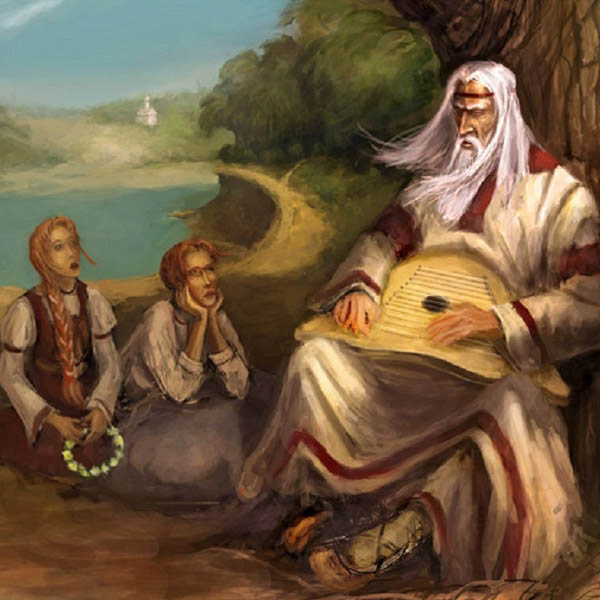
Culture, norms and values
Done by: Solihova R.B.

The Content:
- What is culture?
- What are norms?
- What are values?

Culture is the collection of customs, attitudes, values, and beliefs that characterizes one group of people and distinguishes them from other groups.

- Culture includes the products of a group of people.
- Culture is passed from one generation to succeeding generations through immaterial culture , such as values, norms, language, rituals, and symbols, and material culture , such as objects, art, and institutions.

Values
Values refer to intangible qualities or beliefs accepted and endorsed by a given society. Values are distinct from attitudes, traits, norms, and needs.

Values share the following characteristics and qualities:
• Values tend to be unobservable;
• Values tend to be conflated with other social and psychological phenomena;
• Values tend to have historical and cultural variability.
• Values express an idealized state of being.

Examples of modern U.S. values include
achievement; success; independence; freedom; democracy; scientific discovery; progress; comfort; education; and ideas of racial, religious, or gender superiority.
Ten values shared by 70 cultures spread throughout the world.
These ten values include
hedonism, power, achievements, stimulation, self-direction, universalism, benevolence, conformity, tradition, security.

Norms
Norms refer to conditions for social relations between groups and individuals, for the structure of society and the difference between societies, and for human behavior in general.

- Norms are shared rules, customs, and guidelines that govern society and define how people should behave in the company of others.
- Norms may be applicable to all members of society or only to certain subsets of the population, such as students, teachers, clergy, police officers, or soldiers in warfare.
- Norms guide smooth and peaceful interactions by prescribing predictable behavior in different situations.

Types of norms
• Folkways refer to norms that protect common conventions. Most people in a society follow traditional folkways but failure to conform to them is considered neither illegal nor immoral. Examples of common folkways found in the United States include having turkey for Thanksgiving dinner or mowing ones lawn.
• Mores refer to stronger norms with associated moral values. Examples of common mores found in the United States include prohibitions against murder, multiple spouses, or desecration of religious symbols.
• Taboos refer to the strongest types of mores. Taboos include the belief that certain activities, such cannibalism, are outside the bounds of cultural acceptance. Violations of mores and taboos tend to be treated with strong social disapproval or criminal consequences.

- Laws refer to the mores that are formally enforced by political authority and backed by the power of the state. Laws may enforce norms or work to change them. Examples of laws that worked to change existing norms include the liquor prohibition laws of the 1920s or civil rights legislation of the 1950s.
 time = money Dining as a social experience. Religious rules Elastic and relative time consciousness. Time spent on enjoyment of relationships Focus on nuclear family. Responsibility for self. Value on youth, age seen as handicap 7. Values and norms Focus on extended family. Loyalty and responsibility to family. Age given status and respect Individual orientation. Independence Preference for direct confrontation of conflict 8. Beliefs and attitudes Group orientation. Conformity. Preference for harmony Egalitarian. Challenging of authority. Individuals control their destiny. Gender equity 9. Mental processes and learning style Hierarchical. Respect for authority and social order. Individuals accept their destiny. Different roles for men and women Linear, logical, sequential, Problem-solving focus 10. Work habits and practices Lateral, holistic, simultaneous. Accepting of life's difficulties Emphasis on task. Reward based on individual achievement. Work has intrinsic value Emphasis on relationships. Rewards based on seniority, relationships. Work is a necessity of life " width="640"
time = money Dining as a social experience. Religious rules Elastic and relative time consciousness. Time spent on enjoyment of relationships Focus on nuclear family. Responsibility for self. Value on youth, age seen as handicap 7. Values and norms Focus on extended family. Loyalty and responsibility to family. Age given status and respect Individual orientation. Independence Preference for direct confrontation of conflict 8. Beliefs and attitudes Group orientation. Conformity. Preference for harmony Egalitarian. Challenging of authority. Individuals control their destiny. Gender equity 9. Mental processes and learning style Hierarchical. Respect for authority and social order. Individuals accept their destiny. Different roles for men and women Linear, logical, sequential, Problem-solving focus 10. Work habits and practices Lateral, holistic, simultaneous. Accepting of life's difficulties Emphasis on task. Reward based on individual achievement. Work has intrinsic value Emphasis on relationships. Rewards based on seniority, relationships. Work is a necessity of life " width="640"
Aspects of Culture
Mainstream American Culture
1. Sense of self and space
Other Cultures
Informal, Handshake
2. Communication and language
Formal Hugs, bows, handshakes
Explicit, direct communication Emphasis on content--meaning found in words
3. Dress and appearance
Implicit, indirect. communication. Emphasis on context--meaning found around words
"Dress for success" ideal. Wide range in accepted dress
4. Food and eating habits
Dress seen as a sign of position, wealth, prestige. Religious rules
Eating as a necessity--fast food
5. Time and time consciousness
6. Relationships, family, friends
Linear and exact time consciousness. Value on promptness--time = money
Dining as a social experience. Religious rules
Elastic and relative time consciousness. Time spent on enjoyment of relationships
Focus on nuclear family. Responsibility for self. Value on youth, age seen as handicap
7. Values and norms
Focus on extended family. Loyalty and responsibility to family. Age given status and respect
Individual orientation. Independence Preference for direct confrontation of conflict
8. Beliefs and attitudes
Group orientation. Conformity. Preference for harmony
Egalitarian. Challenging of authority. Individuals control their destiny. Gender equity
9. Mental processes and learning style
Hierarchical. Respect for authority and social order. Individuals accept their destiny. Different roles for men and women
Linear, logical, sequential, Problem-solving focus
10. Work habits and practices
Lateral, holistic, simultaneous. Accepting of life's difficulties
Emphasis on task. Reward based on individual achievement. Work has intrinsic value
Emphasis on relationships. Rewards based on seniority, relationships. Work is a necessity of life


















 time = money Dining as a social experience. Religious rules Elastic and relative time consciousness. Time spent on enjoyment of relationships Focus on nuclear family. Responsibility for self. Value on youth, age seen as handicap 7. Values and norms Focus on extended family. Loyalty and responsibility to family. Age given status and respect Individual orientation. Independence Preference for direct confrontation of conflict 8. Beliefs and attitudes Group orientation. Conformity. Preference for harmony Egalitarian. Challenging of authority. Individuals control their destiny. Gender equity 9. Mental processes and learning style Hierarchical. Respect for authority and social order. Individuals accept their destiny. Different roles for men and women Linear, logical, sequential, Problem-solving focus 10. Work habits and practices Lateral, holistic, simultaneous. Accepting of life's difficulties Emphasis on task. Reward based on individual achievement. Work has intrinsic value Emphasis on relationships. Rewards based on seniority, relationships. Work is a necessity of life " width="640"
time = money Dining as a social experience. Religious rules Elastic and relative time consciousness. Time spent on enjoyment of relationships Focus on nuclear family. Responsibility for self. Value on youth, age seen as handicap 7. Values and norms Focus on extended family. Loyalty and responsibility to family. Age given status and respect Individual orientation. Independence Preference for direct confrontation of conflict 8. Beliefs and attitudes Group orientation. Conformity. Preference for harmony Egalitarian. Challenging of authority. Individuals control their destiny. Gender equity 9. Mental processes and learning style Hierarchical. Respect for authority and social order. Individuals accept their destiny. Different roles for men and women Linear, logical, sequential, Problem-solving focus 10. Work habits and practices Lateral, holistic, simultaneous. Accepting of life's difficulties Emphasis on task. Reward based on individual achievement. Work has intrinsic value Emphasis on relationships. Rewards based on seniority, relationships. Work is a necessity of life " width="640"


















